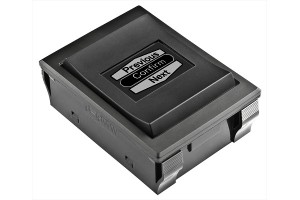Risk minimization, particularly at the stage of releasing design data to production and manufacturing, has been the focus of increasing attention as the product development landscape has changed. One of the most significant shifts in the way organizations work manifests in the disconnection between design and manufacturing, where a product is now likely to be manufactured in a completely different location (region or country) from where it is designed. Fuelled by the rise of a truly global electronics industry, outsourcing or ‘offshoring’ manufacture is now commonplace because the potential cost and efficiency benefits are hard to ignore for most organizations.
This change in the product development process has pulled the spotlight firmly on the need to manage and raise the integrity of design data, prior to its release to production and across the entire product development process. Manufacturing documents now need to be sent to fabrication and assembly houses in other parts of the world with different time zones, and possibly languages, which has raised the risk associated with pushing the design release button to a whole new level. You can’t just pop next door to correct a problem during the production stage.
Consequently, there is a strong push for improving both the quality and integrity of the release process, and not surprisingly, an even more rigorous application of the existing design lock-down methodology to minimize risk. In the design space, engineers are forced to adopt more stringent levels of the formalized, locked-down process with the aim of overcoming the much higher risks created by the distance between design and manufacturing. Ultimately, the best and most potentially successful design is wasted effort if poor data integrity causes manufacturing errors, or perhaps worse, if the resulting design respins cause it to be manufactured too late.
The flip side of the risk management coin, promoting design innovation, is the opposing force in current electronics design landscape. While always an important element, the capacity for innovation in electronics design is now crucial to an organization’s success or in some cases its survival. However, every new feature and every product change is a potential source for something to go wrong. We have the crucial need for effective product and feature innovation running headlong into the equally important (and increasing) demand for design control and data integrity.
Companies both large and small now face aggressive competition from all over the world in what has become a globalized electronics industry, and this very environment has opened opportunities for efficient outsourcing. Product individuality and delivering a unique user experience have become the characteristics that define a device’s competitive status amongst the crowd, and those assets can only be sourced though innovation in design.
The need for establishing a clear competitive edge through innovative design, rather than (failing) traditional factors such as price, means that creating the product value and functionality customers are seeking relies on an unrestrained design environment. This freedom allows developers to explore design options, promotes experimentation, and allows for frequent, iterative changes during design exploration. Also, it is a more fulfilling and enjoyable way to design.
The final part of this three part series proposes a different approach to the risk-innovation stalemate.

